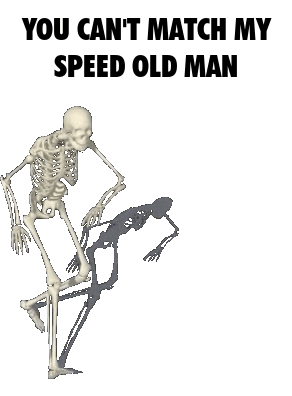"Why is this animation so cool?" and other sakuga questions. A blog about the visual elements of a visual medium. (Main: kbnet)
Don't wanna be here? Send us removal request.
Video
I just saw Look Back yesterday, and I figure I'm not the only one.
Toshiyuki Inoue is the first name listed in the key animator credits, separated by a line from the rest of the animators. You usually see this done to single out animators who had an unusually important de facto role in a production. This lines up with the fact that Inoue was the one to partner with Oshiyama for a live commentary.
If you understand where Look Back came from, and you've read the above interview, maybe you can see why he in particular might've been attracted to the project.
Of course, if I'd been playing closer attention, I'd have seen Inoue a lot sooner than the credits.

Yep, that's him: the guy with the beret, down in the lower right.

Hold on, who's that person next to him though? Is that possibly…

I dunno, the hair and head shape aren't quite right to be Kigami as Inoue would've known him at Telecom. I'll have to wait until the BD comes out to see for sure.
(the guy with the jacket to the far left looks familiar too but we'll see)
I’ve attempted to translate an interview Toshiyuki Inoue gave to the NHK about his long standing inspiration Yoshiji Kigami, who died in the Kyoto Animation fire.
For those playing at home: Inoue has drawn some of your favorite scenes in your favorite anime movies, and Kigami is a big part of the reason why Kyoto Animation can do what they do.
Together, they are two of the best animators to ever live.
Among the named victims of the Kyoto Animation arson was one Yoshiji Kigami (61). He was a long-serving veteran of the Japanese animation industry, taking part in numerous productions, drawing key animation for the Doraemon movies, Grave of the Fireflies, and Akira, among many more. He aided Kyoto Animation’s productions when needed, and additionally put great effort into the training of young talent.
In response, Toshiyuki Inoue (58) has given an interview to the NHK, and we have recorded his comments in text. He himself is among Japan’s best animators, and worked alongside Kigami in the 80s.
Q: How did you meet Kigami?
The TV anime Romance of the Three Kingdoms (1985) was directed by someone at the studio where I was attached at the time (though I was not part of its staff). That’s how I was exposed to Kigami’s animation, and told about his excellent work. His animation was bold and lively and free, yet precise. I was absolutely flabbergasted by how delicate and tidy each and every frame was in spite of how quickly he’d worked. We worked together on Romance of the Three Kingdoms 2: The Heroes who Soar Upon the Heavens (1986), The Foxes of Chironup (1987), and Akira (1988). We were only ever in the same room during production meetings, so we never got a chance to talk, but so impressed was I by the quality of his work that from then on, I took him on as my lifetime one-sided rival, or I should rather say, I made him the goal to which I’d aspire.
Q: What kind of animator was Kigami?
Before I entered the industry, I aspired to many different animators, but once I entered the industry, he became my first concrete goal. He struck me as a true professional with his skill and speed, and I couldn’t match him in either respect. Even today 20 years later, I find that in some ways I still don’t measure up to him. As a matter of fact, I have three of his cuts from The Foxes of Chironup that I show to the younger folk every time I work someplace new. They may be 30 years old, but I think they serve as a fine goal from the standpoint of a modern animator too.
Q: Do you have any particular memories of his talent or personality?
We couldn’t speak during the meetings, so I felt that I should reach out somehow. I made a go of it at a preview screening (a screening for staff before a movie opens), but I didn’t see him there after all. When I asked the director about it, he said Kigami doesn’t go to previews, which was a real shock. These events are an opportunity to see where your own work fails and succeeds (before it opens), and going into an opening without having seen it first is bad for my heart. Kigami showed his confidence by not going – by saying “nah, I don’t even need to check.” That’s how it seemed to me.
Q: How would you characterize the influence Kigami had on Kyoto Animation and the world of anime at large?
From the outset, the professionalism (in the sense I aspire to) with which the staff did their job, borne by their own technical prowess, was unmistakable. Kigami was the one who taught them those things which I hold most important – that marriage of skill and swiftness – and I think it’s clear that these things have taken root in KyoAni. That’s what comes across more than anything else in KyoAni’s work. They could’ve never made what they made otherwise. The trend nowadays inclines towards looking for skill in animators; how quick they are doesn’t enter into the equation. The “prompt proficiency” I learned from Kigami was once the mark of a professional, but I feel that world is disappearing. This is another one of the reasons why I’d like to pass down Kigami’s work to the next generation.
Q: Finally, what was your reaction to the incident?
I can’t quite find the words to express how I felt. 35 people were robbed of their life, and many others injured for absolutely selfish reasons. Even if I were to go on and gather my words, they could not suffice to express the senselessness, nor the anger, nor the sadness.
61 notes
·
View notes
Text
Wait a second, I never shared this on why-animation!
The Spring 2024 Artist_Unknown OP Festival is here.
>What? It's already summer!
True
>and literally all of these segments are just you!

5 notes
·
View notes
Text
Happy 55th anniversary of the first Moon landing!
I'm running a panel called EXPLOSIONS! at Otakon 2024 AT: 23:15, 03 August (Saturday) IN: AMV Theater -where I'll talk about this sequence (among many others).
If you follow me, there's a fair chance you're well familiar with the rocket launch scene animated by Hideaki Anno at the climax of Royal Space Force: Wings of the Honneamise – and if so, there's a fair chance you know the rocket is essentially a Soviet R7/Soyuz family launch vehicle with fancy calligraphy.
But lately I noticed something cool.
Ryusuke Hikawa, who is something of a scholar of Japanese effects animation, notes for the BD release that Anno and his friends appear to have paid close attention to gas temperature gradients when animating all the scene's many excellent explosions.

That's pretty neat. Let's take a look at the gases at not!Soyuz's booster and core stage nozzles.
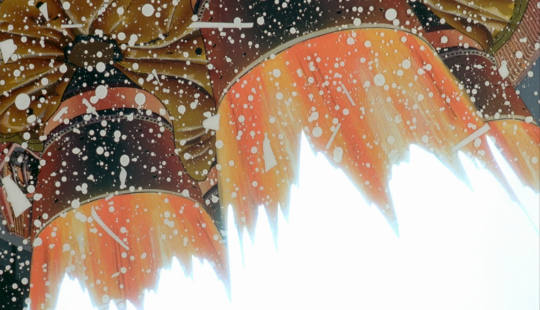
There's a curtain of cooler gases near the nozzle, which transitions rather sharply into very bright and hot gases depicted using toukakou. Toukakou literally means "light transmission," but I like rendering it as "cel glow:" simple and evocative. I'm mentioning this because it's translated a million different ways in a million different sources, including as "filtration" in the BD notes above.
In any case, this is typical of rocket engines which use film cooling to keep their nozzles from melting – and a specific type of film cooling too. This looks like what happens when you dump a lot of cold gas – for instance, from the gas generator – through a manifold down the lower portion of the nozzle.
It's a fascinating detail, but it's a bit weird, because no engine used on a Soyuz family rocket looks like that.
There's a good reason for it though. The Soviets were all about Great Scientific Accomplishments, but they never really believed in the "pics or it didn't happen" principle. As far as I'm aware, they didn't bother sticking expensive high speed high resolution engineering cameras near their rocket launches, and they were selective about releasing what they did have for national security reasons. Anno would not have had great close-up reference footage of an RD-107 family rocket engine burning.
There is one very famous, very well documented rocket engine that uses this cooling method, however.
youtube
In fact, from the timing of how the gas curtain flutters, I'm pretty sure Anno had this exact footage.
It'd figure too. Yasuhiro Takeda mentions this while talking about a small, trial run convention his SF club hosted before Daicon III:

I could certainly see Anno or someone else hearing about these materials through Takeda and either borrowing it themselves or making a copy. Not that similar footage would've been hard to obtain otherwise. Using the sophisticated research method of "search アポロ11号NHK on youtube," I can find a documentary from as early as '94 which includes this footage, and who knows what tapes Anno would've been able to bring back from his trip to Kennedy SFC?
Thank goodness for VHS.
417 notes
·
View notes
Text
youtube
At first I thought this might be roto due to how the folds act and the timing, but that's just how Takashi Kojima animates.
(it might still be roto but ¯\_(ツ)_/¯)
The idea is interesting. Someone in advertising saw how much people love clipping anime dances (arguably a trend as old as video on the internet) and said "hey but what if we did that ourselves for marketing purposes?"
The next step will be to create a "Yamada-core" aesthetic™ through picturesque animated vignettes of characters doing everyday things – but it won't quite work. I'm calling it now so that I can reblog this on the off-chance I'm actually right.
8 notes
·
View notes
Text
I lost motivation to summarize this promotional event about Kimi no Iro about halfway through but I'm posting it anyway
youtube
My listening comprehension is pretty bad, so caveat lector. eiga.com has their own summary in Japanese.
The movie has been finished since around January
After seeing Liz, Genki Kawamura called up Shinkai and was like "yo have you seen this shit?"
Kawamura claims he's had success selling the overseas distribution rights on a level you'd normally expect from a Ghibli or Shinkai movie.
God Yamada looks so fucking nervous and uncomfortable with people talking about her on stage.
Following that question is a kind of weird exchange where the host uses Kawamura's answer as a segue to ask Naoko Yamada how the movie came about. She gives the non-answer that she respects the concept of theatrical filmmaking and made this film with the experience of the people who come to the theater to see it in mind. She emphasizes the theatrical experience later as well.
The host follows up by doing what in the English speaking world is almost a faux pas: ask a director point blank what their movie's theme is. Yamada has no qualms about laying down her views on her own work – she's part of her own audience – but her work is usually too complicated to sum up so easily. She struggles to put together a response and I'm not sure how to summarize it except "I wanted to make a movie that would connect with people, who will all bring their own points of view to the movie, but the themes are difficult to put into words." The eiga.com article didn't even try.
The old key visual/teaser of course represented the characters using colors, and the host asks how she uses colors. A good question. Yamada explains that color is a sensual thing: something like time and movement which is vital to film language. The concept that Totsuko visualizes the world and people around her as colors is part of this. I'm surprised she doesn't go into more detail, but again: she is clearly not in her element lol
The host asks what they should expect from the movie, mentions music, and Yamada is immediately like "MUSIC! You've got it right. Music. A musical experience. [whisper] yeah. that's it."
Kawamura quickly jumps in to say that Yamada is the best director in the world at depicting the linguistically inexpressable feelings of teenagers and mention K-ON!
The announcer says that Yamada watching the seiyuu introduce themselves has the warmth of a mom watching her daughters, which is true but a weird thing to say lmao
Note how Yamada watches the others and can't tell whether to sit down or bow
-and that's about as far as I got. To quickly summarize the eiga.com summary, during the seiyuu portion Sister Hiyoshiko's seiyuu (I'm not forgetting how that's read am I?) Yui Aragaki says that when she saw the finished movie, "everything was so fine and soft; a kindness came from the screen like a spring breeze blowing through my heart," thus illustrating that they use the same clichés to talk about Yamada in Japanese as in English. Sounds about right though. Further, her character is "a figure between the adults and the kids, who quietly yet fervently…yeah, truly fervently watches over Totsuko and the rest."
There are some anecdotes about Yamada's impressions of the actors and their impression of Yamada – apparently Takaishi's seiyuu came with a huge-ass water bottle that was already like half empty – but that's honestly about the long-and-short of it.
6 notes
·
View notes
Text
Norimitsu Suzuki's animation in Metallic Rouge has honestly been one of its highlights. He also did this part in EP05 and probably this part from this week's EP12 (among others). It's very funny how many people have noticed his work in MR, because he's requested to go uncredited since the late 00s – as if he were fooling anyone. He solo animated the ED for Onimai and the credits are just like "Who animated this?? We may never know…"
youtube
Next level flex tbh
EDs are kinda his specialty. People my age would probably best recognize his EDs for Death Note, the 2003 FMA, Soul Eater, and Eureka Seven. You'll notice that a lot of these productions are led by Bones, and while he isn't an employee, he is buddies with some folks who are. It's no surprise he'd show up so frequently for their 25th anniversary project.
It's funny when the animation goes ABSOLUTELY HARD for no reason in a simple conversation and back to normal right after.
548 notes
·
View notes
Text

Hey now, Shinya Ohira rules :(
I get it, and you aren't the only one. Anyone who takes a moment to engage in good faith with animation is A-OK in my book. That said, let me introduce you to a legend:
youtube
It's an old video, but it mostly checks out. He's worked here and there on a lot of different anime since then, including Miyazaki's latest (and final?) film Kimitachi wa Dou Ikiru ka. You can spot his work easily right at the beginning of the trailer as the boy runs through the burning city.
His work in Pluto is more restrained – his drawings cleaner – but as you pointed out, the way he animates movement stands out. Is it good? I think so. I think it really captures the force of the wind and the characters' emotions. The part with Uran bracing against the wind telling Atom to get inside, and the one with Atom telling her to stay back are amazing. For the latter, his draftsmanship (especially his grasp of foreshortening) really sells the staging of Atom in the foreground taking a few steps back as he gestures towards Uran in the background, but most importantly, the way his outline almost seems to melt in the wind ties the whole composition together with motion as well as form. It's not the only valid way to have animated this, but I think this could've been some of Ohira's strongest work if half of it weren't hidden.
Speaking of the compositing, I do admit, I don't hate the smoke trails. They at least preserve the outlines of Ohira's drawings. They're like a less refined version of Kou Yoshinari's effects.
Six years hand drawn.
They say "seven," but that can't be true. It must've taken a whole year to hide the other six behind all this ugly compositing and CG.
63 notes
·
View notes
Text
youtube
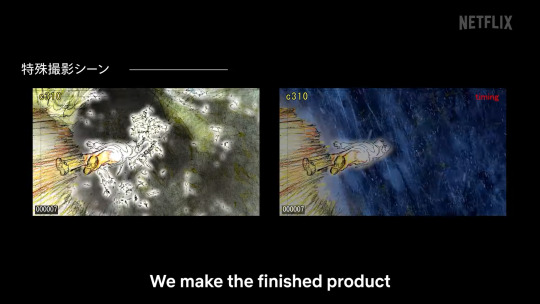
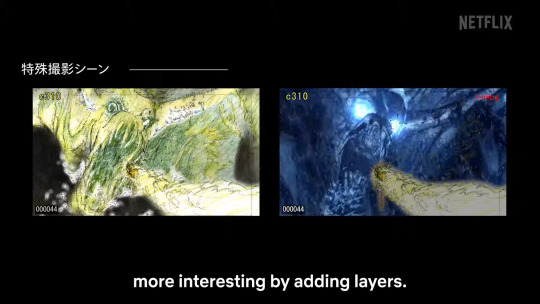
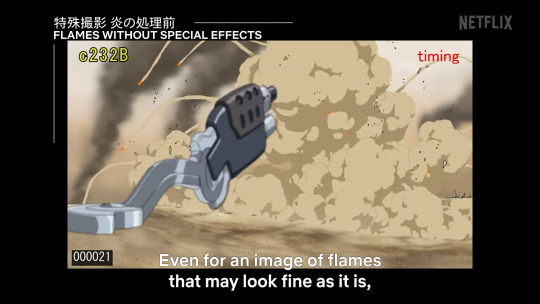
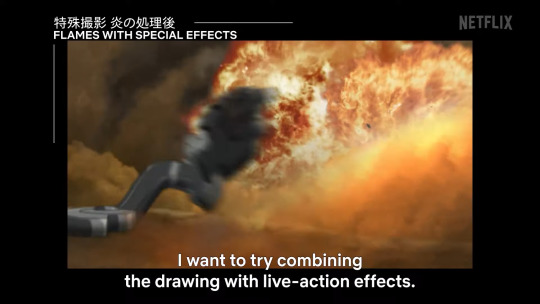
*cries eternal*
Okay, but what do the animators think? Were they on board at least?
"They should've just done it full CG from the start. I gave up two years worth of opportunities for this, and I want them back."
"The effects all got replaced by crappy sentai-ass CG […] If it looked cool at least I might've even consented, but…"
Ah.
Well, for their own sanity I hope they don't see this vi-
"That figures…"
Six years hand drawn.
They say "seven," but that can't be true. It must've taken a whole year to hide the other six behind all this ugly compositing and CG.
63 notes
·
View notes
Text
Six years hand drawn.
They say "seven," but that can't be true. It must've taken a whole year to hide the other six behind all this ugly compositing and CG.
63 notes
·
View notes
Text
You know what? Sure, fuck it, those posts are on-topic, they can stay.
0 notes
Text
Discovered this fascinating animation error in episode 11.
Looks like mid way through the animation process on this shot Martin's backpack was mistaken for Elan 5's arm, resulting in this Transformers bufoonery.
#this episode has equal amounts amazingly good and amazingly bad animation#it's because Sunrise does not know how to organize an anime production in 2023 and only avoided complete disaster through being Sunrise#I uhh…may have some anecdotes from friends that I hope I can tell someday#gundam: witch from mercury
248 notes
·
View notes
Photo
Wait is Taiga doing the classic Star Trek Double Handed Punch™?
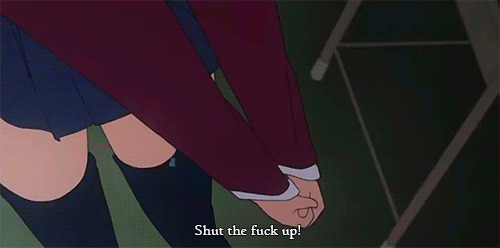
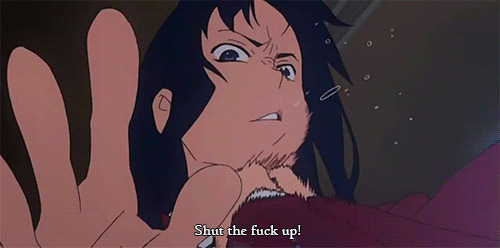
PFTAHAHAHAHAHAHAHAHAHA
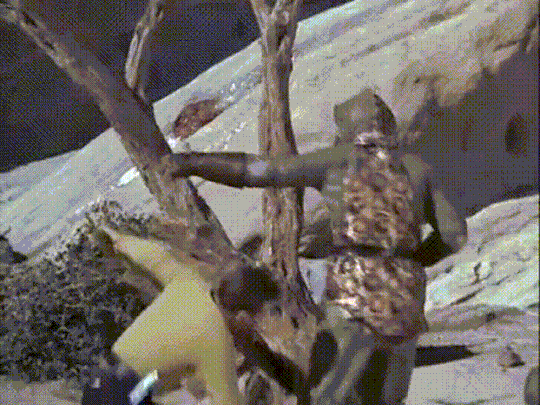
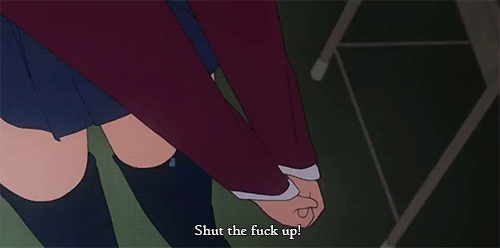
#Toradora#ka: seiya numata#this is actually really good animation – that's what makes it even funnier
29K notes
·
View notes
Text
Director Ishihara ✕ Chief Director Ogawa Discussion (re: Sound! Euphonium ~ Ensemble Contest)
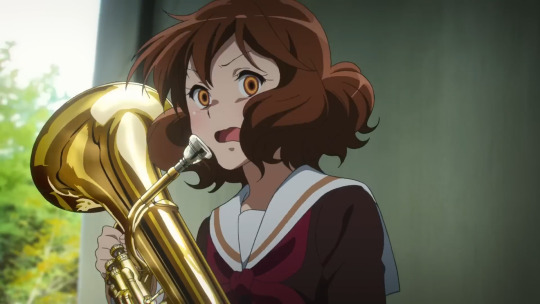
My translation of the discussion featured here on the official Eupho site. Figured it might be worthwhile since I suspect Ogawa's gonna be a major figure at KyoAni in the coming decade. Caveat lector though.
A Prologue to the Kumiko 3rd Year Arc
─Special Edition: Sound! Euphonium ~ Ensemble Contest (Ensemble) is the first entry in four years for the Sound! Euphonium (Eupho) series, and production is currently underway. How’s it going?
Ishihara: Coming back to Eupho again…hoo boy, it’s a handful! (Laughs)
Ogawa: (Laughs) The animation for the instruments and stuff can give us trouble here and there, but in my opinion, this is the sort of anime where the real problem is figuring out how to portray the drama. First of all, Ensemble was originally planned to be an OVA, and also Ensemble is tied to the Kumiko 3rd year arc (scheduled to air in 2024), so I’ve been thinking about how that’s gonna work.
─So at first it was planned to be an OVA?
Ishihara: The Kumiko 3rd year arc in 2024 is still pretty far away, and we know we’re keeping the fans waiting, so we got to talking and felt that we should have something in the mean time. To that end, there was a story in the novels from the back half of 2nd year that we didn’t portray in Sound! Euphonium the Movie ~ The Promised Finale (Chikai no Finale) about Kumiko’s first efforts as club president with the ensemble contest. We decided it’d be a good idea to put it out as a standalone episode. In terms of composition, we made it like an extension of the TV series. However some time later, it had turned into something we could show as a film, so we made it with the big screen in mind. Truth be told, the drawing count really got away from us. (Laughs) It might not look quite as flashy as a movie, but I think you can look forward to it with tempered expectations: it's a depiction of unspectacular everyday life.
─You talked a bit about it being tied to Kumiko’s 3rd year arc. How exactly does Ensemble fit in with the series?
Ogawa: I think one of the biggest points is that it serves as a prologue to Kumiko being club president. The first season closely depicts the activities of the wind ensemble club, and the second season focused on the human relationships. When I think about what’s interesting in the Kumiko 3rd year arc, the biggest thing has gotta be how Kumiko’s future is shaping up now that she’s a club president. Ensemble is connected to the 3rd year arc, so this fits in as a prologue to her being president.
The balance of realism and entertainment
─What’s been at the front of your mind while making Ensemble?
Ogawa: This applies to the whole of Sound! Euphonium, not just Ensemble, but when it comes to the wind ensemble itself, to my mind, the keyword is “lifelike,” or “realistic.” “Like you're really there.” We’ve been very much focused on balancing this goal with making it entertaining as anime.
Ishihara: Absolutely, that’s exactly what we were thinking when we were making Eupho and pursuing that sense of verisimilitude in animation. Drawing the instruments as realistically as we could and all…
Ogawa: That said, sometimes you'll have a scene that just screams "hey, make me a highlight!" and you can end up over-directing it, so it’s pretty hard.
Ishihara: Yep, that’s it, that’s the experience. Just because you have flashy scenes doesn’t mean you’re telling your story, and in fact you can often tell a story by resolving the characters’ emotions without having any flashy scenes at all.
Ogawa: On the other hand, I do think it’s better to do something anyway and regret it than not to do it at all, even if it ends up over-directed and loses that sense of realism, because there really are a lot of cases where it turns out better as a result…I’m constantly struggling with that feeling.
Ishihara: Also, and this doesn’t have anything to do with directing, but there are some seniors who show up who’ve moved on from the band, which I think people will like.
─It’s been about four years since the last Eupho visual project. What does the staff look like?
Ogawa: There are a lot of people who watched Eupho as students and told me they joined Kyoto Animation because they liked it so much. Their desire to do something great really comes across.
Ishihara: Part of me wondered what’ll happen now that there’s so much new staff who hasn’t worked on Eupho before, but they draw Eupho the same as always, and with utmost care. It makes me so glad. It’s been a long time since we’ve drawn instruments, but the movement in the marimba cuts is so good to the point where it looks nearly like it was rotoscoped. Nope! It was all animated solely from the reference footage.
Ogawa: Man, the staff is working so hard. It used to be that even when we used 3DCG, we needed to retouch it to give it texture. That caused us all kinds of trouble. Since then, the 3D and compositing staff have improved even more and come up with all kinds of tools. As the series has incremented, we’ve all really come to appreciate the advantages of both 2D and 3D animation. We’d like to improve ourselves even more with the Kumiko 3rd year arc.
Eupho: Past and Present
─You mentioned instruments. Regarding the music, I hear the piece you planned on using, “Omens of Love,” is the subject of some discussion.
Ogawa: There’s a passage in Ensemble that features “Omens of Love.” I was in charge of the boards for half of Ensemble, and at first there weren’t plans to use any musical compositions. However, when it became a theatrical project, we decided to utilize a piece since there was a passage that we wanted to really make an impression. When we asked around our staff involved with the wind ensemble what sort of piece they thought would be good, there were a lot of people who answered “Omens of Love.” It was a song I’d heard of through a few places too, and I think it really fits. The more I listened to it, the more I liked it, the more I got jazzed about the idea. (Laughs)
─How did recording with the wind ensemble go?
Ishihara: The performers are mostly all different from the first season, but it’s still the same ol’ Eupho. Ogawa-kun, you hadn’t participated in the recording before. What did you think?
Ogawa: It really got to me. I’d been invited to regular concerts, so I’ve heard live performances before, and those were plenty moving too of course, but this time I was listening to them closer up, and it just felt more imminent somehow…the sense of presence was just amazing. So many people were gathered for the purpose of making just one cartoon, and yet a lot of people came to tell me how much they liked Eupho. We were recording a short version of Omens of Love, and yet I was very impressed with how Ouwada-sensei and everyone else from the orchestra came up with all these forward-looking proposals for the trimming process, taking on the role of creators in their own right.
─It sounds like real teamwork
Ogawa: I came to truly understand how broad the domain is about which I know nothing. I learned a lot at the recordings, but there’s no way that could possibly cover everything, so it really did have the sense that this was something everyone was making together. What about you, Ishihara? You’ve been to these recordings so often…
Ishihara: It’s really interesting to hear a performance up close. I love places where people are making stuff, like workshops, and, of course, my own workplace included. The audio recording studio has the feel of a “maker space” too, so it just feels really comfy.
Ogawa: There are some things that you can just feel how good they are in your bones. There are some takes where you know it’s good the moment you hear it, and everyone else feels the same way. That’s not specialist knowledge; that’s just what’s so interesting about music: it really is a common tongue.
─There are some new cast members, and some who haven’t dubbed Eupho in many years. Was there anything remarkable about the dubbing process?
Ishihara: We talked some about realism and entertainment at the start, and my own directorial sensibilities have changed since the first TV season as well. Around the time of the first season, Eupho had a lot of instances of anime-like comical modes of expression, but those have gradually faded. I think the cast’s delivery has transitioned from something more anime-like to something closer to realism.
Ogawa: I feel that there were a lot of times when the sound director, (Youta) Tsuruoka, was putting a ton of passion into his directing. During the dubbing process, Tsuruoka was like “do it like you just want to start it all over again. Do it with the feeling that you want to tear down everything you’ve done up to now.” I got the sense that Tsuruoka had a very clear idea of what he wanted. I interpreted it as him proceeding under the premise that even if you break from what came before it won’t truly be a break, and that he’d see what feelings each cast members would take with them as they took their fresh start. People were saying things like “if you’re not growing, you’re doing it wrong,” and just as the cast took that attitude and grew a bit, so too did their characters – at least that’s how it felt to me.
The vision behind Kumiko Oumae’s depiction
Ogawa: There was one other thing that really left an impression on me from the dubbing, and that’s regarding Kumiko. Up until now the structure has been that other characters would be having problems and Kumiko would be looking on, but looking towards the 3rd year arc, it’s more about Kumiko herself. Tsuruoka talked with (Tomoyo) Kurosawa – Kumiko’s voice actress – about the nuances of “how to finally express the story of Kumiko Oumae.” They also discussed how to “leverage everything they had up to now,” and I thought “ahh, I see now.” It’s not a “connecting” but rather a “leveraging” process that will drive our progress towards something new, or something like that. It’s something I thought about in productions meetings and stuff regarding how to tell Kumiko Oumae’s story. As production progresses, there are times when that theme becomes so obvious that it actually becomes invisible. I came to be painfully aware of that while listening to Tsuruoka’s direction, feeling quite thankful for it, and at the same time feeling the pressure knowing that nothing will escape Tsuruoka’s eye. (Laughs)
─Do you have a message for the fans?
Ogawa: There will be new compositions in this one, so those are the places to watch and listen carefully. The power of theatrical audio equipment for listening to music is unmistakable, so I hope you all like it. I’m looking forward to it too! If you’d all walk on down to the theaters, I’d be much obliged.
Ishihara: I think we're taking a new start headed towards the Kumiko third year arc. As with everything else in life, it’s a lot fun declare “it all starts here!” and take that first step straight forward. I think that feeling is what this work is all about. You’ll be getting a glimpse of the Kumiko of the future. I hope you all enjoy it.
16 notes
·
View notes
Text
I recently rewatched Victory Through Airpower. All of the explosions are more or less in the usual cartoon visual language common to American animation at the time…except for this one. The flames on the plane are pretty standard, but I very rarely see this style of explosion with hot gas flashing through the surface of the smoke in anime either. It's striking and very unusual.
Also note how the explosion starts on 1s before going to 2s. A Japanese animator following Toei Douga would have it as 2s and 3s with maybe a small handful of 1s, which is part of why the motion still clearly reads (to me) as classic American and not Yasuo Otsuka displaced in time, but it's worth emphasizing that Japan did not invent the concept of frame modulation for artistic effect whole cloth.
Someone more familiar with old Disney could probably tell me immediately who this was, but I'm afraid I'm in the dark.
33 notes
·
View notes
Text
You know what? Fuck it: the Melty Blood animation stays – it's on topic
1 note
·
View note
